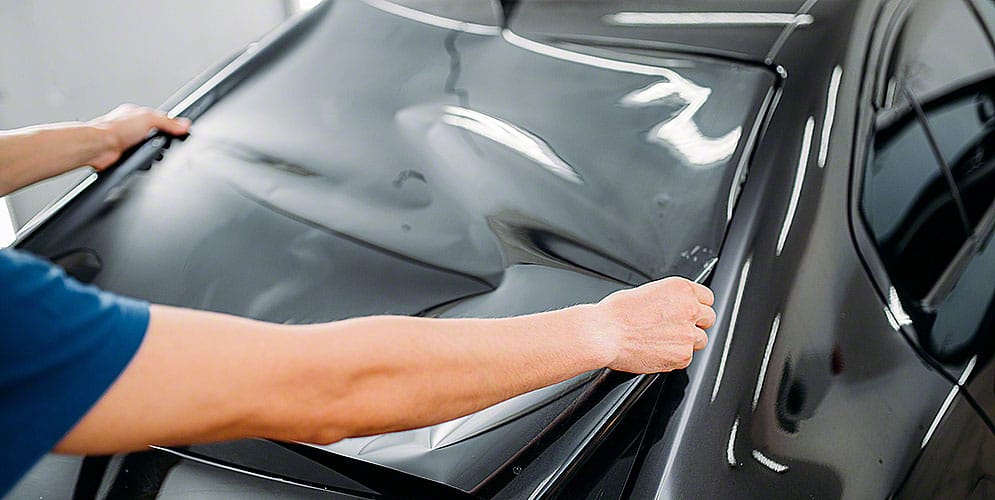Car window tinting offers numerous benefits, including heat reduction, UV protection, and enhanced privacy. However, to ensure these benefits last long-term, proper maintenance of your window tint is essential. This article will provide detailed guidance on how to maintain your car window tint effectively, preserving its appearance and performance over time.
Understanding Window Tint:
Before delving into maintenance tips, it’s crucial to understand the composition of window tint. Most window tints consist of thin layers of polyester film treated with dyes, metals, or ceramics to achieve desired properties such as heat rejection and UV protection. These layers are then adhered to the interior surface of car windows using adhesive.
Cleaning Your Window Tint
Regular cleaning is key to maintaining the appearance and functionality of your window tint. However, it’s important to use gentle cleaning methods to avoid damaging the tint film. Here’s a step-by-step guide to cleaning your window tint effectively:
- Use a mild soap or detergent: Avoid harsh chemicals or ammonia-based cleaners, as they can degrade the tint film over time. Instead, opt for a gentle soap or specialized tint-safe cleaner.
- Use a soft, non-abrasive cloth: Microfiber towels or cotton cloths are ideal for cleaning window tint, as they won’t scratch or damage the film. Avoid using paper towels or rough sponges, as they can leave scratches.
- Gently wipe the surface: Moisten the cloth with soapy water and gently wipe the tinted surface in a circular motion. Avoid applying excessive pressure, as this could cause the tint film to peel or bubble.
- Rinse and dry: After cleaning, rinse the surface with clean water to remove any soap residue. Then, use a dry cloth to gently blot the surface dry. Avoid rubbing, as this could cause friction and damage the tint film.
Avoiding Abrasive Materials and Techniques
When cleaning your window tint, it’s essential to avoid abrasive materials and techniques that could damage the film. This includes abrasive cleaners, scrub brushes, or scraping tools. Additionally, avoid using ammonia-based cleaners, as they can break down the adhesive and cause the tint film to bubble or peel.
Protecting Your Tint from Harsh Conditions
Exposure to harsh environmental conditions can accelerate the deterioration of window tint. To protect your tint from damage, consider the following precautions:
- Park in shaded areas whenever possible: Prolonged exposure to direct sunlight can cause the tint film to fade or degrade over time. Whenever feasible, park your car in shaded areas or use a windshield sunshade to reduce sun exposure.
- Avoid using abrasive materials: When cleaning your car, be mindful of the products and techniques you use to avoid scratching or damaging the tint film. Opt for gentle cleaning methods and avoid abrasive materials that could scratch the tint.
- Regularly inspect for damage: Periodically inspect your window tint for signs of damage, such as peeling, bubbling, or discoloration. If you notice any issues, address them promptly to prevent further damage and maintain the integrity of the tint film.
Professional Maintenance and Repairs
While regular cleaning and maintenance can help prolong the life of your window tint, professional maintenance and repairs may be necessary from time to time. If you encounter issues such as bubbling, peeling, or discoloration that cannot be addressed with DIY methods, consult a professional tint installer for assessment and repairs.
The Role of Window Tinting in Preserving Upholstery and Dashboards
When it comes to car maintenance, protecting the interior is often overlooked. However, prolonged exposure to sunlight and UV radiation can cause significant damage to your car’s upholstery, dashboard, and other interior surfaces. Window tinting offers a practical solution to safeguarding your interior against these harmful effects.
Understanding the Threat
Sunlight contains ultraviolet (UV) radiation, which can penetrate through glass windows and cause damage to various materials inside your car. Prolonged exposure to UV rays can lead to fading, discoloration, and deterioration of upholstery, leather, vinyl, and plastic surfaces. Additionally, heat buildup inside the car can accelerate this process, further exacerbating damage to the interior.
The Role of Window Tinting
Window tinting acts as a barrier against harmful UV radiation and excessive heat, effectively protecting your car’s interior from damage. Tinted windows can significantly reduce the amount of UV rays that enter the vehicle, thereby minimizing the risk of fading and deterioration of interior surfaces. Additionally, window tinting helps regulate interior temperatures by blocking solar heat gain, creating a more comfortable driving environment and reducing the strain on your car’s air conditioning system. You can also get paint protection film Springfield to protect its interiors.
Preserving Upholstery
One of the most noticeable effects of prolonged sun exposure is the fading and discoloration of upholstery fabrics. Fabrics such as cloth seats, carpets, and headliners are particularly susceptible to UV damage, resulting in a dull, worn-out appearance over time. Window tinting helps preserve the vibrant colors and integrity of your car’s upholstery by blocking up to 99% of harmful UV rays. By reducing UV exposure, tinted windows can prolong the lifespan of your upholstery and maintain its original appearance for years to come.
Protecting Dashboards and Trim
In addition to upholstery, dashboard surfaces, trim panels, and other interior components can also suffer from sun damage. Excessive heat and UV radiation can cause dashboard materials to crack, warp, or fade, diminishing the overall aesthetic appeal of the interior. Window tinting provides a protective shield against these effects, helping to maintain the condition and value of your car’s interior. By reducing heat buildup and UV exposure, tinted windows help prevent premature aging and deterioration of dashboard surfaces and trim panels.
Choosing the Right Window Tint
When selecting window tint for your car, it’s essential to consider factors such as tint darkness, heat rejection properties, and UV protection levels. High-quality tint films with advanced UV-blocking technology offer superior protection against sun damage while providing optimal visibility and aesthetics. Additionally, professional installation ensures proper fitting and adherence of the tint film, maximizing its effectiveness and longevity.
Conclusion
Proper maintenance is essential for preserving the appearance and performance of your car window tint. By following the tips outlined in this article, you can ensure that your tint remains in optimal condition for years to come, providing you with continued benefits such as heat reduction, UV protection, and enhanced privacy. Remember to prioritize gentle cleaning methods, avoid abrasive materials, and address any issues promptly to maintain the integrity of your window tint.
Window tinting plays a crucial role in preserving your car’s interior and protecting it from the damaging effects of sunlight and UV radiation. By blocking harmful UV rays and reducing heat buildup, tinted windows help maintain the appearance, comfort, and resale value of your vehicle. Whether you’re looking to safeguard your upholstery, dashboard, or trim panels, going to a good auto tint shop Springfield can provide long-lasting protection and peace of mind for years to come.


